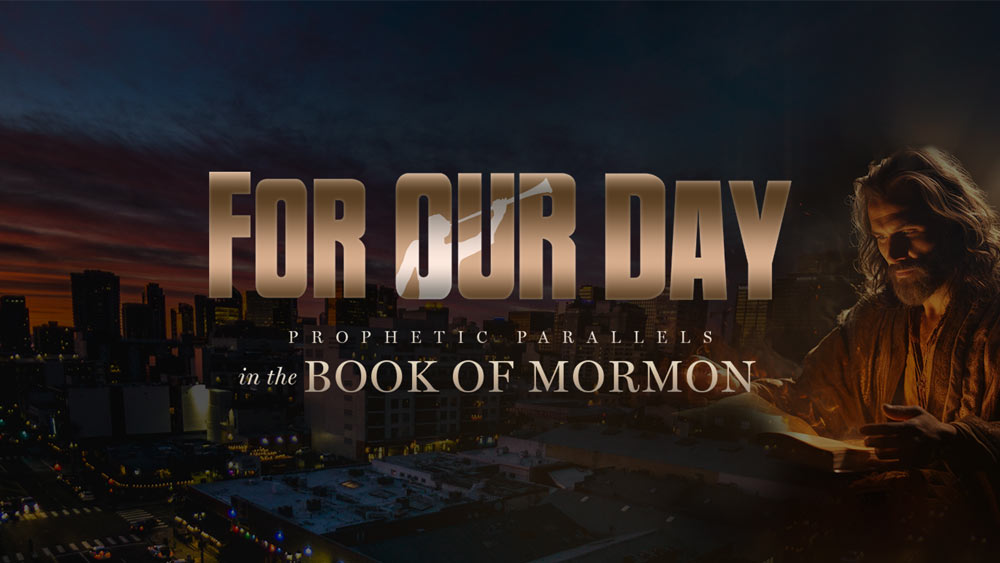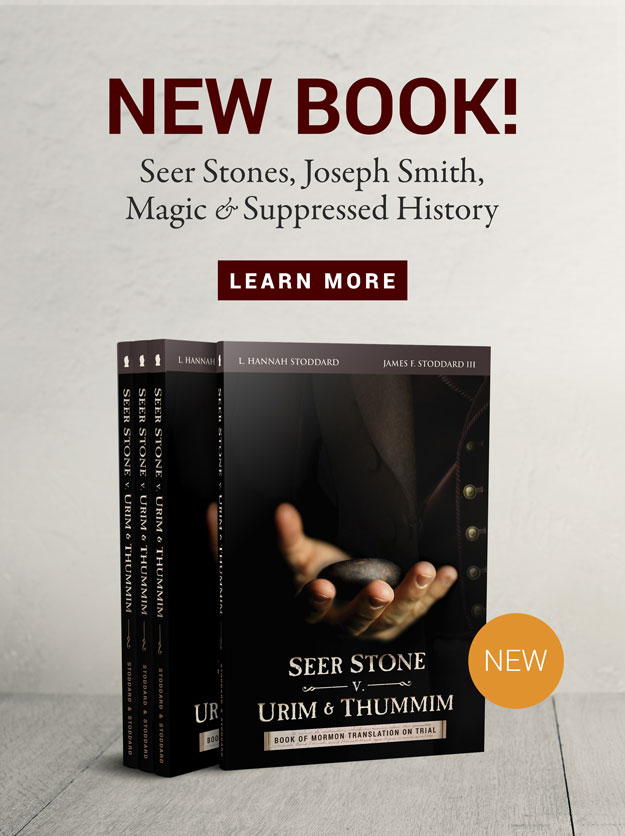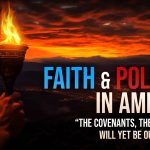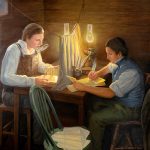John Hancock is one of the eminent spirits who appeared to President Wilford Woodruff in the St. George Temple (Latter-day Saint, LDS) on August 21, 1877. This interesting story is detailed in the Eminent Spirits Appear to Wilford Woodruff wiki.
Associated Locations:
- Braintree (now Quincy), Province of Massachusetts Bay
Associated Dates:
- January 23, 1737 – Born
Life Sketch from “Lives of the Signers”
Lives of the Signers of the Declaration of Independence, B.J. Lossing
One of the most distinguished personages of the War of Independence, was John Hancock, who was born near the village of Quincy, in Massachusetts, in the year 1737. His father and grandfather were both ministers of the gospel. His father is represented as a pious, industrious, and faithful pastor; a friend of the poor. and a patron of learning. He died while John was quite an infant, and left him to the care of a paternal uncle, who cherished him with great affection. This relative was a merchant in Boston, who had amassed a large fortune, and after having given John a collegiate education at Harvard College (where at the age of seven- teen years he graduated) he took him into his counting-room as clerk.
His abilities proved such, that, in 1760, he sent him on a business mission to England, where he was present at the funeral rites of George II., and the coronation ceremonies of George III. Soon after his return to America, his uncle died, and left him, at the age of twenty-six, in possession of a princely fortune-one of the largest in the Province of Massachusetts.
Becomes Politician, Active Against British Government
He soon relinquished his commercial pursuits, and became an active politician, always taking sides with those whose sentiments were liberal and democratic. He was soon noticed and appreciated by his townsmen in Boston, and was chosen by them one of its selectmen, an office of much consideration in those days. In 1766, he was chosen a representative for Boston in the General Provincial Assembly, where he had for his colleagues some of the most active patriots of the day, such as Samuel Adams, James Otis, and Thomas Cushing.
. . .
At the time of the Boston Massacre, and during the commotion known as the Tea Riot. Mr. Hancock was bold and active; and in March, 1774, on the occasion of the anniversary of the “Massacre,” he boldly delivered an oration, in which he spoke in most indignant terms of the acts and measures of the British Government. In I767, Mr. Hancock was elected a member of the Executive Council, but the choice was so displeasing to the governor, that he rejected him. He was again and again elected, and as often rejected, and this served to increase his popularity among the people. At last the governor, for reasons not easily divined, sanctioned his appointment, and received him into the Council.
Activity During Revolutionary War

In John Trumbull’s famous painting The Declaration of Independence, Hancock, as presiding officer, is seated on the right as the drafting committee presents their work.
In 1774, the Provincial Congress of Massachusetts unanimously elected Hancock their president and in that same year was chosen a delegate to the Continental Congress; and was reelected to the same station in 1775. When Peyton Randolph left the presidential chair of the Continental Congress, John Hancock was elected to that station, and filled that chair on the ever memorable Fourth of July, 1776. As President, he first signed the Declaration of Independence, and with his name alone, it first went forth to the world. His bold signature, the very index of his character has always excited the admiration of the beholder.
Mr. Hancock resigned the office of President of Congress in 1777, owing to the precarious state of his health and the calls of his private affairs, which had been necessarily much neglected, and he hoped to pass the remainder of his life in the retirement of the domestic circle. But that pleasure he was not suffered long to enjoy by his fellow citizens. He was elected a member of the Convention of Massachusetts to form a Constitution for the government of that commonwealth. Therein he was assiduous as usual, and upon him was first conferred the honor, under the instrument of their adoption, of being Governor of the Province, or State. He was the first who had this dignity conferred by the voluntary suffrages of the people. He held the office five consecutive years, by annual election. For two years he declined the honor, but again accepted it, and held the office until his death, in I793.
Adoption of Federal Constitution
He was governor during that period of confusion which followed the adoption of the Federal Constitution, and its final ratification by the several States, and his wisdom and firmness proved greatly salutary in restraining those lawless acts which a spirit of disaffection toward the general government had engendered in New England, and particularly in Massachusetts and New Hampshire. Of course his character and motives were aspersed by the interested, but when the agitation ceased, and the clouds passed away, his virtues and exalted character, shone with a purer luster than before. . . . He was elected a member of the Convention of Massachusetts to act on the adoption of the Federal Constitution. He voted for the adoption of the constitution, and by his influence, a majority voted with him. 1
Character Traits
Strong, Dauntless Leader Before Revolutionary War
Years before Mr. Hancock entered upon public life, the tyrannous measures of the British cabinet had excited the fears of the American colonies, and aroused a sentiment of resistance that long burned in the people’s hearts before it burst forth into a flame of rebellion. These feelings were familiar to the bosom of young Hancock, for he imbibed the principles of liberty with the breath of his infancy, and when circumstances called for a manifestation thereof, they exhibited the sturdy vigor of maturity. When Parliament adopted those obnoxious measures toward America, which immediately succeeded the odious Stamp Act, Mr. Hancock was a member of the Provincial Assembly, and, in union with those patriots before named, and others, he determined not to submit to them. He was one of the first who proposed and adopted non importation measures, a system which gradually spread to the other colonies, and produced a powerful effect upon the home government. Open resistance at length became common, and the name of Hancock figures conspicuously in the commotions that agitated Boston for more than eight years. He became a popular leader and drew upon himself the direst wrath of offended royalty. 2
Inspired Teachings
“In circumstances as dark as these, it becomes us, as Men and Christians, to reflect that whilst every prudent measure should be taken to ward off the impending judgments, … at the same time all confidence must be withheld from the means we use; and reposed only on that God rules in the armies of Heaven, and without His whole blessing, the best human counsels are but foolishness…
Resolved; … Thursday the 11th of May…to humble themselves before God under the heavy judgments felt and feared, to confess the sins that have deserved them, to implore the Forgiveness of all our transgressions, and a spirit of repentance and reformation …and a Blessing on the … Union of the American Colonies in Defense of their Rights [for which hitherto we desire to thank Almighty God]…That the people of Great Britain and their rulers may have their eyes opened to discern the things that shall make for the peace of the nation…for the redress of America’s many grievances, the restoration of all her invaded liberties, and their security to the latest generations.
“John Hancock, A Day of Fasting, Humiliation and Prayer, with a total abstinence from labor and recreation. Proclamation on April 15, 1775”
Resources
E-books
Lives of the Signers to the Declaration of Independence, Rev. Charles A. Goodrich, John Hancock
Lives of the Signers to the Declaration of Independence, B.J. Lossing








2 Responses
My name is Dean McEwen. I’m the gospel doctrine teacher in the SLC 17th Ward. I read in Wilford Woodruff’s journal that all the signers of the Declaration were performed with the exception of two: John Hancock and William Floyd. However, Sister Anderson writes that the work was done. I know the work wasn’t done for three presidents, but I also thought it wasn’t done for Floyd & Hancock. Any thoughts? Thank you.
Hi Dean! I found the answer on an ldsliving article here: http://www.ldsliving.com/What-You-Didn-t-Know-About-the-Founding-Fathers-Temple-Work-Story/s/78831
It says: “Woodruff discovered that all of the temple work for Signers John Hancock and William Floyd had already been performed in the St. George Temple prior to the vision. This left 54 Signers who still needed to have their temple endowments completed.”